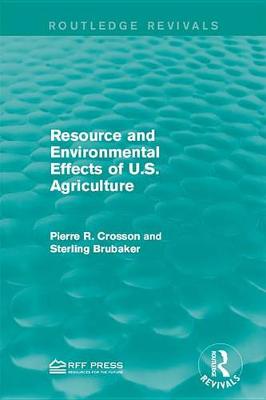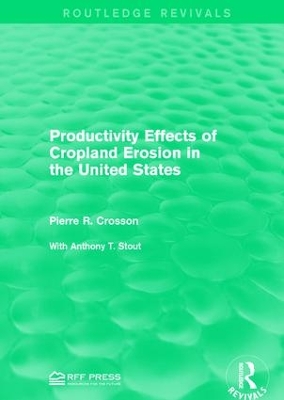Routledge Revivals
3 total works
Resource and Environmental Effects of U.S. Agriculture
by Pierre R. Crosson and Sterling Brubaker
Originally published in 1982, this report explores long-term trends in demand for U.S. agricultural production, energy prices and agricultural technologies and their effect on natural resources such as land and water in the United States. Crosson and Brubaker also discuss possible policy modifications in order to lessen the environmental impacts expected to emerge from these trends. This title will be of interest to students of Environmental Studies.
At the beginning of the 1970's, global grain reserves were level and food prices were low however as the decade progressed crop production plummeted leading to a food crisis. Originally published in the aftermath in 1977, Crosson and Frederick set out to explore the ability of agricultural output to meet the global food demands of future generations. This study analyses how resources and environmental factors would affect food production in developing countries and the United States until the end of the 21st Century. The environmental impacts of land levels, fertiliser and pesticide use are explored in relation to the challenges of meeting food demands. This title will be of interest to students of environmental studies.
Productivity Effects of Cropland Erosion in the United States
by Pierre R. Crosson
In the 1970’s, agriculture in the United States seemed to be booming. With an extra demand for crops, extra acres were taken on to increase production which was predicted to increase further with an ever-growing population. However, concerns were beginning to be raised over the adequacy of land for crops as potential croplands began to be converted into urban areas as well as the effects of soil erosion decreasing the quality of these croplands. Originally published in 1983, this study investigates the threats to crop productivity in the U.S. with a focus on human-made problems. This title will be of interest to students of environmental studies.


